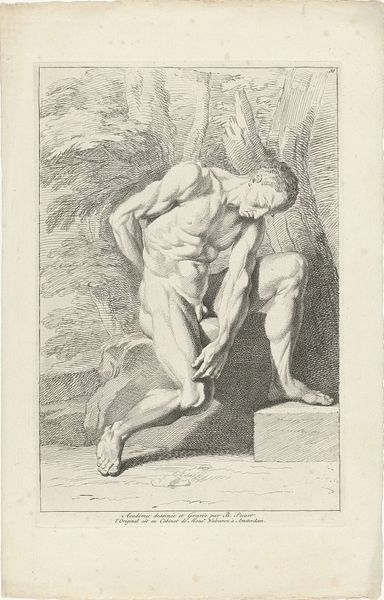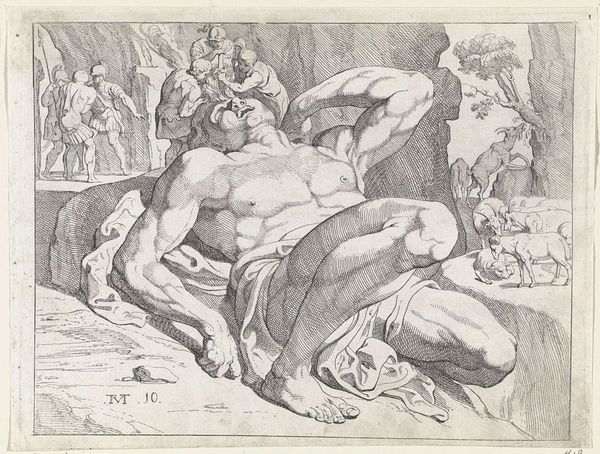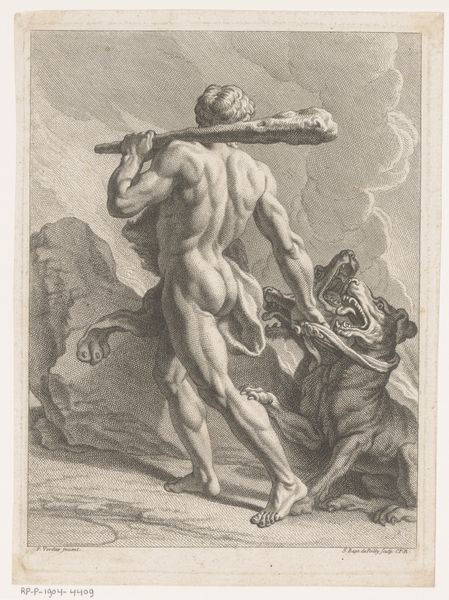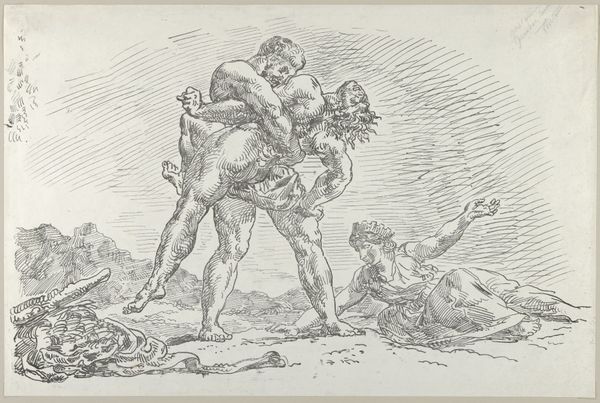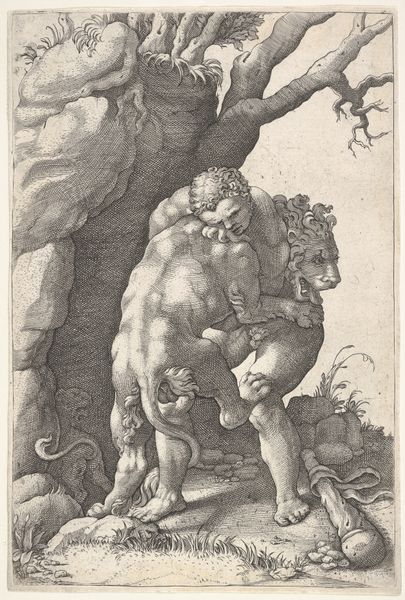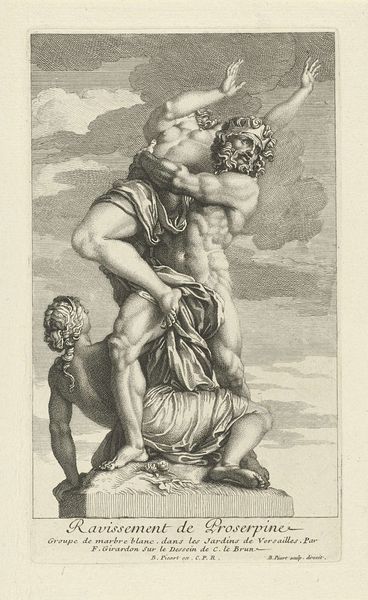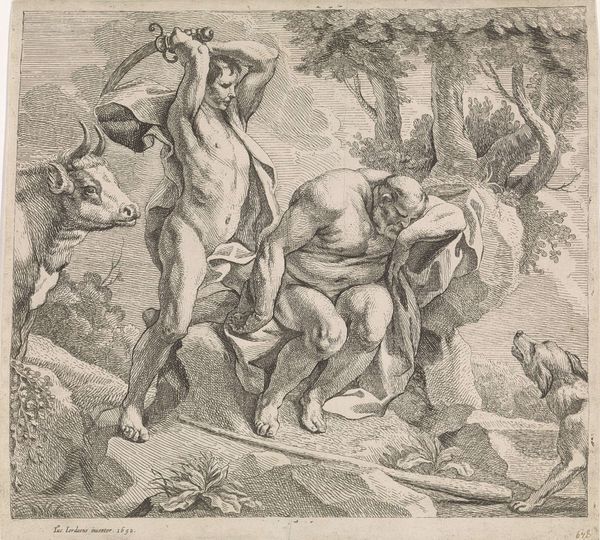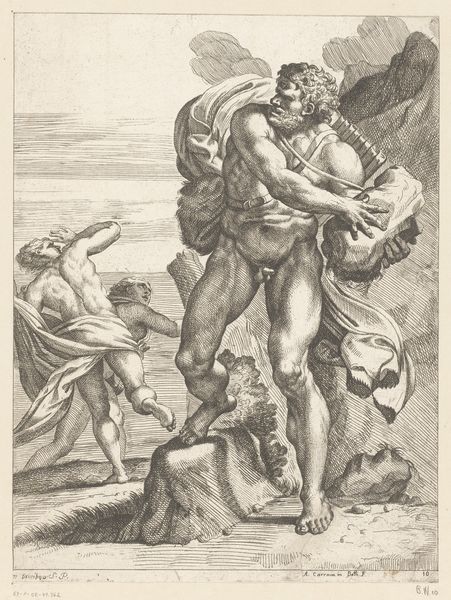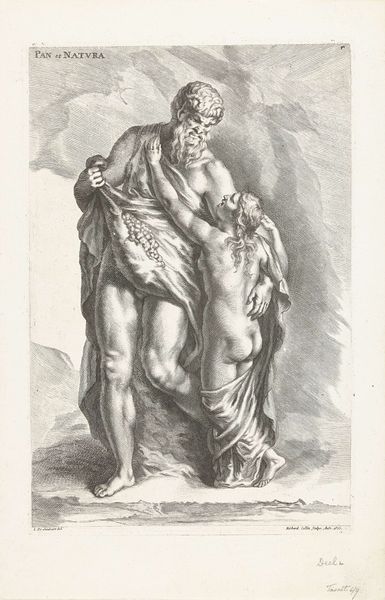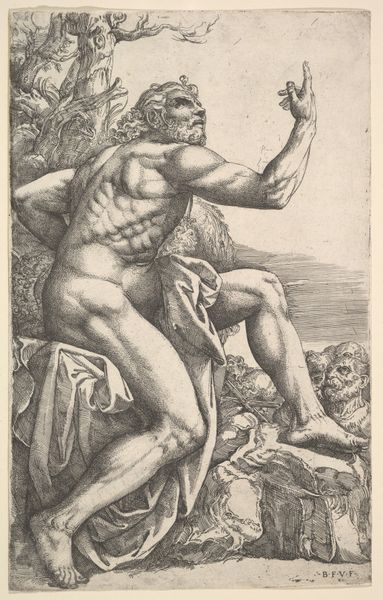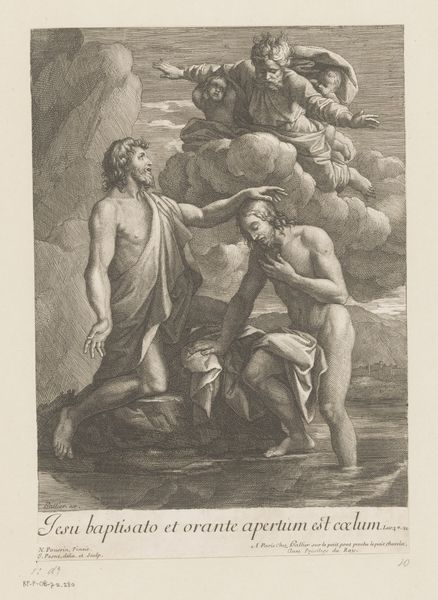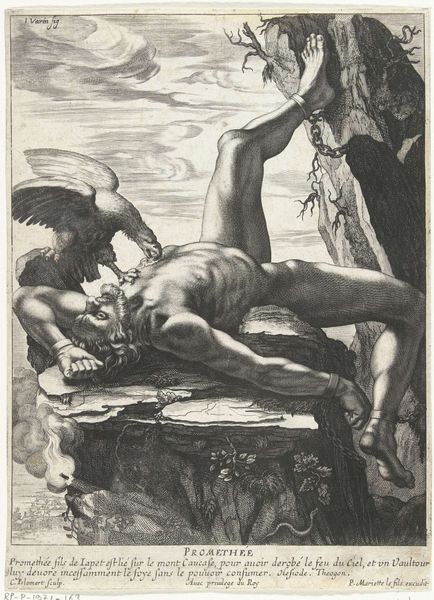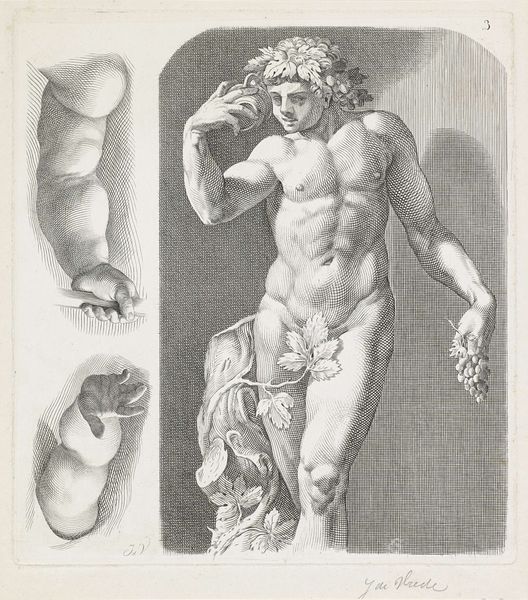
engraving
#
baroque
#
figuration
#
history-painting
#
academic-art
#
engraving
#
male-nude
#
realism
Dimensions: height 318 mm, width 207 mm
Copyright: Rijks Museum: Open Domain
Curator: Looking at "Gladiatores," created by Richard Collin in 1677, you immediately get a sense of the kind of drama inherent in Baroque engravings. Editor: The sheer physicality! They’re intertwined, a brutal dance. I'm almost getting whiplash from trying to untangle their limbs. There is a vulnerable beauty about it, too, you know? Curator: Precisely. Think about the laborious process of creating this print, layer by painstaking layer on the copper plate, to produce something meant for distribution, and wider consumption. It flattens class distinctions by rendering historical subject matter more visually accessible. Editor: Accessible, yes, but also idealized. Aren't these gladiators a little too…perfect? Their musculature is so pronounced; it's as if their struggle exists solely in the realm of aesthetic form rather than the dirt and pain of reality. It makes me wonder if Collin ever saw an actual gladiatorial combat. Maybe it's based on descriptions? Curator: Most likely from interpretations and visual sources passed through other engravings. The print medium’s replicability encouraged distribution and circulation, which facilitated stylistic movements like Realism within academic circles and increased appreciation for figuration more broadly. This piece exists not only as art but as artifact within networks of trade and visual information sharing. Editor: Well, artifact or not, I still feel a pull toward the emotional content that’s present! Their bodies tell the whole story. Every strained muscle, every bead of nonexistent sweat is trying to escape. It has something to do with capturing a precise moment of both pain and victory. I do think the male nudes carry strong heroic appeal. Curator: That emotional intensity comes partially from how it exists materially as an object designed for mass production; through a kind of mechanized means it gains greater social impact. Collin’s focus here exemplifies Baroque art practices broadly concerned with how best could human emotion move crowds most effectively to action through distribution methods Editor: Well put! "Gladiatores," beyond all the socio-historical context, lingers as an emotive portrayal of the body and the drama inherent in these intimate clashes. It resonates powerfully with the kind of performative intensity we now value in everything from reality television to contact improvisation.
Comments
No comments
Be the first to comment and join the conversation on the ultimate creative platform.

